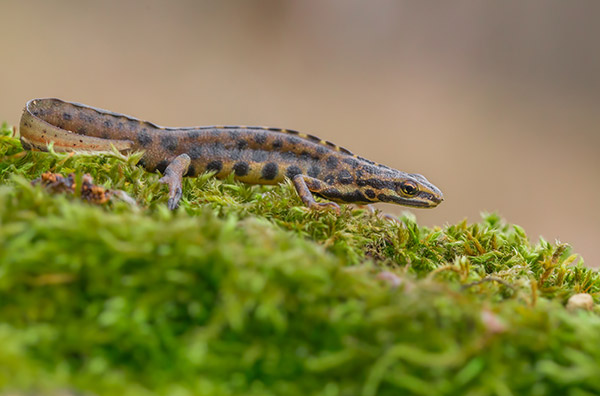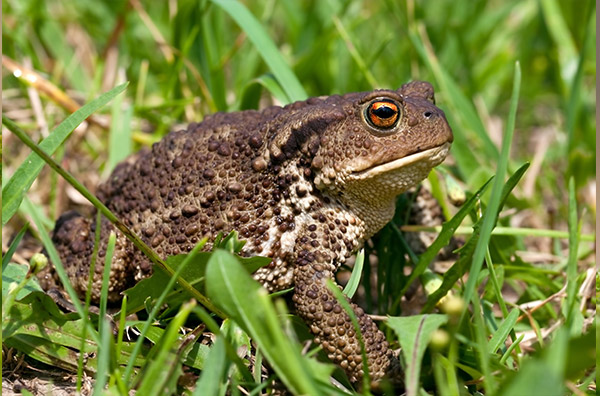Do you know who the amphibiansare? Salamanders, newts, frogs, toads and others, belong to this group. But what does the word "amphibians" mean? It comes from the Greek amphìbios, which means "both kinds of life"; this is because, despite having colonized the terrestrial environment, in their vital cycle they preserve an aquatic stage.
Remember that amphibians were the first vertebrates to appear from the water and colonize the landmass more than 400 million years ago!
Some characteristics of amphibians:
- ectothermic (cold-blooded) animals, their bodies are not able to produce heat and their temperature changes according to the environmental one.
- their skin is uncovered and has glands that secrete some sort of mucus necessary to keep it moist and protect it from bacteria or other microorganisms. In some species, these glands produce poisonous substances.
- the skin is also used in breathing.
- the four legs are suitable for moving on the ground, but also for swimming.
- some have a tail, others don’t.
- the eggs laid, are covered by a gelatinous envelope.
- the males of some amphibians, are able to emit sounds to attract the females and drive away the competitors, thanks to the presence of air sacs.
- many have bright colours, especially to discourage any predators. Each colour is associated with the ability of amphibians to produce toxic substances.
...with the tail and no tail
Amphibians are divided into Urodela and Anura.
The urodela (meaning "visible tail") are those amphibians with the tail, both in the larval and in the adult phase, such as salamanders and newts. Many people, for this characteristic, confuse them with the lizards, but be careful, they are reptiles and not amphibians!
The anura (meaning “without tail”) on the opposite, lose the tail during the metamorphosis from tadpole to adult, such as frogs and toads.

The life cycle... aquatic and terrestrial stages
Most amphibians have a two-phase life cycle: the adults, able to live on the mainland, during the reproductive period move in small and big water collections for laying the eggs. When they hatch, come out the larvae which breathe through the gills, and have therefore, an aquatic life. But let’s go with order:
- the adults lay the eggs in water during the reproductive period, which changes depending on the species and the place, but in general, matches to the spring or the end of the cold season (between February and May). Some amphibians move from the place where they have spent the winter in hibernation, towards the collection of water where they will lay the eggs. Others spend the hibernation period, directly near the breeding site. This also changes according to the species and the place.
- eggs may be laid in gelatinous piles between the vegetation of stagnant waters or streams with weak current, such as some frogs. Toads lay their eggs in gelatinous strings, linked between the stems of aquatic plants. The newts finally, lay eggs singularly, not in clusters, fixing them also to the aquatic vegetation.
- from the eggs of the Anura (without tail) develop tadpoles, from the Urodela ones (with the tail) the larvae. The tadpoles, completely different from how they will be when adult, do not have the legs, have outer gills and a strong and waving tail that allows them to swim. The larvae have external gills too, but on the contrary, they look like miniature adults.
- the metamorphosis. In the Anura, the tadpole begins first to develop the hind legs, soon after will follow that of the forelimbs. At this point, the distinction between head and trunk begins to be seen, with a progressive reduction of the tail, until its complete disappearance. During the metamorphosis develop the lungs, which take the place of the gills when the young individual will leave the aquatic life.
In the Urodela, the larva develops early the legs, and during the metamorphosis does not lose the tail, but undergoes a progressive reduction of the membrane that surrounds it. The growth is accompanied by the development of the lungs, which at the end of the metamorphosis, take the place of the gills.
At the end of this process, Anura and Urodela are ready to go out on mainland.
